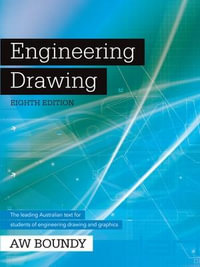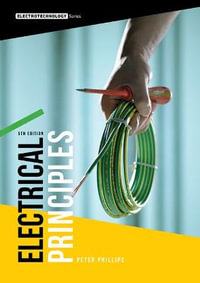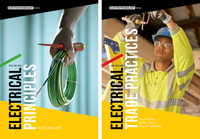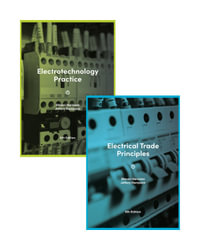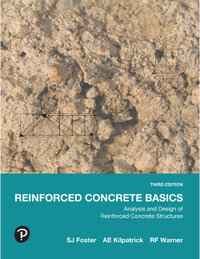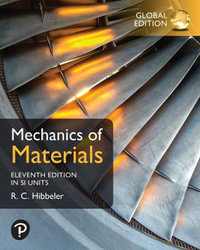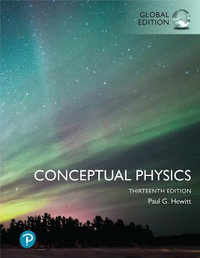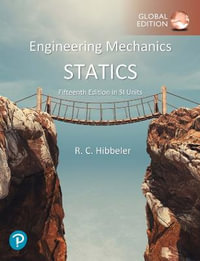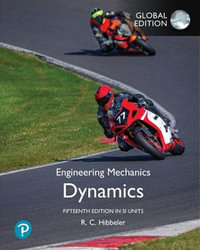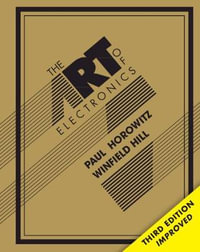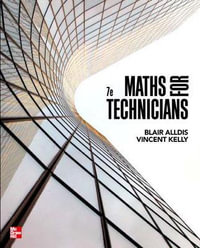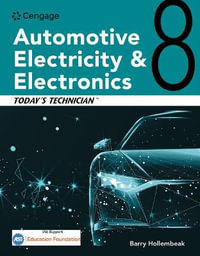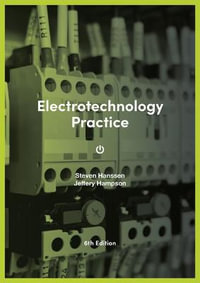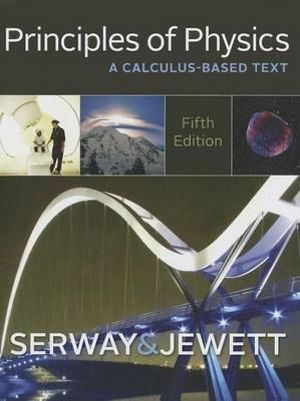
Principles of Physics: A Calculus-Based Text
5th Edition
By: Raymond A. Serway, John W. Jewett
Hardcover | 14 February 2012 | Edition Number 5
At a Glance
Hardcover
RRP $254.95
$200.95
21%OFF
Aims to ship in 7 to 10 business days
When will this arrive by?
Enter delivery postcode to estimate
Authors Raymond A. Serway and John W. Jewett have revised the Fifth Edition of PRINCIPLES OF PHYSICS to include a new worked example format, new biomedical applications, two new Contexts features, a revised problem set based on an analysis of problem usage data from WebAssign, and a thorough revision of every piece of line art in the text.
The Enhanced WebAssign course for PRINCIPLES OF PHYSICS is very robust, with all end-of-chapter problems, an interactive YouBook, and book-specific tutorials.
New to this Edition
- NOW AVAILABLE WITH CENGAGE YOUBOOK! This an interactive, easily customizable eBook, delivered via Enhanced WebAssign, lets you personalize the text content to fit your course and connect with your students. Personalize the book by removing and rearranging chapters in the table of contents, tailoring assigned readings that match your syllabus exactly, or editing narrative content in the book by adding a text box or striking out text. The Cengage YouBook also boosts students' experience with the book by letting them highlight text, add their own notes, and insert bookmarks. Animations and videos play right on the page at the point of learning so that they're not speed bumps to reading but true enhancements. Self-check quizzes in the printed textbook come to life with instant grading.
- LINE-BY-LINE REVISION OF THE QUESTIONS AND PROBLEMS SET. Assisted by the user data gathered by WebAssign, the authors reviewed each Question and Problem line-by-line to improve both readability and assignability. This extensive revision involved editing problems for clarity, editing for length, introducing better problem architecture by breaking up problems into clearly defined parts, and revising to make problems clearer to both professors and students.
- REVISION OF WORKED EXAMPLES. All in-text "Worked Examples" have been recast and are now presented in a two-column format to better reinforce physical concepts and provide conceptual explanations next to the math for every step. Solutions are presented symbolically as much as possible and only substituting in numbers at the last possible moment. This approach helps students think symbolically when they solve problems, instead of automatically looking to insert numbers into an equation to solve a problem. The examples closely follow the authors' proven "General Problem Solving Strategy," which is introduced in Chapter 1 to reinforce good problem-solving habits. About one-third of the worked examples include "What If?" extensions that further reinforce conceptual understanding. Every "Worked Example" can be assigned and graded through the Enhanced WebAssign homework management system.
- TWO NEW CONTEXTS FEATURES. Two new Contexts features were added to the "Physics in Context" organization of the text. Context 4 (Ch. 15) now addresses the issue of heart attacks, while Context 7 (Ch. 22-23) now covers the use of magnetism in medicine.
- THOROUGH REVISION OF ARTWORK. Every piece of artwork in the Fifth Edition was revised in a new and modern style that helps express the physics principles as well as making certain that the physical situations presented corresponded exactly to the textual discussion at hand. "Focus Pointers," a new feature for many pieces of art, either point out important aspects of a figure or guide students through a process illustrated by the artwork or photo. This new art style also helps those students who are visual learners.
- BIOMEDICAL APPLICATIONS. For biology and pre-med students, "BIO" icons highlight practical and interesting applications of physical principles to biology and medicine. More life-science applications in the problems sets and worked examples are also included in this new edition.
- REVISED QUESTIONS SET ORGANIZATION. The organization of the questions set has been completely overhauled by the authors. The "Questions" section is now divided into two sections: "Objective Questions" and "Conceptual Questions."
- OBJECTIVE QUESTIONS. "Objective Questions" are multiple-choice, true/false, ranking, or other multiple-guess-type questions. Some require calculations designed to facilitate students' familiarity with the equations, the variables used, the concepts the variables represent, and the relationships between the concepts. Others are more conceptual in nature and are designed to encourage conceptual thinking.
- Conceptual Questions – Improve student comprehension with these short-answer and essay-type questions that require students to think conceptually about a physical situation.
- NEW PROBLEM TYPES. Four new problem types have been introduced for this edition: "Quantitative/Conceptual" problems contain parts that ask students to think both quantitatively and conceptually. "Symbolic" problems ask students to solve a problem using only symbolic manipulation. Reviewers asked us specifically to increase the amount of symbolic problems found in the text, as this better reflects the way they want their students to think when solving physics problems. "Guided" problems break a standard problem into smaller steps, helping students grasp all the concepts and strategies required to arrive at a correct solution. "Impossibility" problems begin with the phrase, "Why is the following situation impossible?" and then describe a physical situation. A student must determine what questions need to be asked and what calculations need to be performed; based on the results the student must determine why the situation described is not possible.
- Chapter Summaries – Each chapter contains a "Summary" of important concepts and equations along with a section called "Analysis Models for Problem Solving," to better prepare students for lectures and exams.
About the Authors
Raymond A. Serway
Raymond A. Serway (PhD, Illinois Institute of Technology) is Professor Emeritus at James Madison University. His honors and awards include an honorary doctorate degree from his alma mater, Utica College, the 1990 Madison Scholar Award at James Madison University, the Distinguished Teaching Award at Clarkson University in 1977, and the Alumni Achievement Award from Utica College in 1985. As Guest Scientist at the IBM Research Laboratory in Zurich, Switzerland, he worked with K. Alex Müller, 1987 Nobel Prize recipient. He was a visiting scientist at Argonne National Laboratory, where he collaborated with his mentor and friend, the late Sam Marshall. Dr. Serway is the coauthor of COLLEGE PHYSICS, Eleventh Edition; PHYSICS FOR SCIENTISTS AND ENGINEERS, Ninth Edition; PRINCIPLES OF PHYSICS, Fifth Edition; ESSENTIALS OF COLLEGE PHYSICS; MODERN PHYSICS, Third Edition; and the high school textbook PHYSICS, published by Holt McDougal. He has published more than 40 research papers in the field of condensed matter physics and has given more than 60 presentations at professional meetings.
John W. Jewett
John W. Jewett, Jr., earned his undergraduate degree in physics at Drexel University and his doctorate at Ohio State University, specializing in optical and magnetic properties of condensed matter. Dr. Jewett began his academic career at Richard Stockton College of New Jersey, where he taught from 1974 to 1984. He is currently Emeritus Professor of Physics at California State Polytechnic University, Pomona. Through his teaching career, Dr. Jewett has been active in promoting science education. In addition to receiving four National Science Foundation grants, he helped found and direct the Southern California Area Modern Physics Institute (SCAMPI) and Science IMPACT (Institute for Modern Pedagogy and Creative Teaching). Dr. Jewett's honors include the Stockton Merit Award at Richard Stockton College in 1980, selection as Outstanding Professor at California State Polytechnic University for 1991-1992, and the Excellence in Undergraduate Physics Teaching Award from the American Association of Physics Teachers (AAPT) in 1998. In 2010, he received an Alumni Lifetime Achievement Award from Drexel University in recognition of his contributions in physics education. He has given over 100 presentations both domestically and abroad, including multiple presentations at national meetings of the AAPT. Dr. Jewett is the author of THE WORLD OF PHYSICS: MYSTERIES, MAGIC, AND MYTH, which provides many connections between physics and everyday experiences. In addition to his work on PHYSICS FOR SCIENTISTS AND ENGINEERS, he is the coauthor for PRINCIPLES OF PHYSICS, Fifth Edition, as well as GLOBAL ISSUES, a four-volume set of instruction manuals in integrated science for high school. Dr. Jewett enjoys playing keyboard with his all-physicist band, traveling, and collecting antique quack medical devices that can be used as demonstration apparatus in physics lectures. Most importantly, he relishes spending time with his wife Lisa and their children and grandchildren.
ISBN: 9781133104261
ISBN-10: 1133104266
Series: 000441427
Published: 14th February 2012
Format: Hardcover
Language: English
Number of Pages: 1136
Audience: College, Tertiary and University
Publisher: Brooks/Cole ISE
Country of Publication: US
Edition Number: 5
Edition Type: Revised
Dimensions (cm): 32.7 x 24.2 x 5
Weight (kg): 2.36
Shipping
| Standard Shipping | Express Shipping | |
|---|---|---|
| Metro postcodes: | $9.99 | $14.95 |
| Regional postcodes: | $9.99 | $14.95 |
| Rural postcodes: | $9.99 | $14.95 |
How to return your order
At Booktopia, we offer hassle-free returns in accordance with our returns policy. If you wish to return an item, please get in touch with Booktopia Customer Care.
Additional postage charges may be applicable.
Defective items
If there is a problem with any of the items received for your order then the Booktopia Customer Care team is ready to assist you.
For more info please visit our Help Centre.
